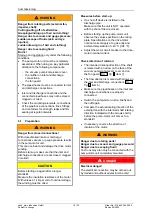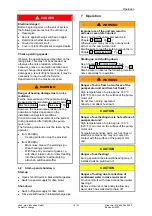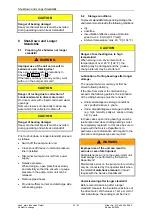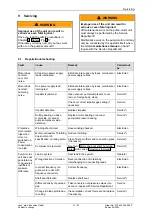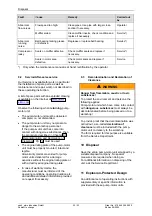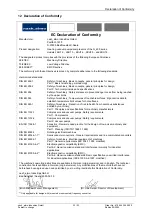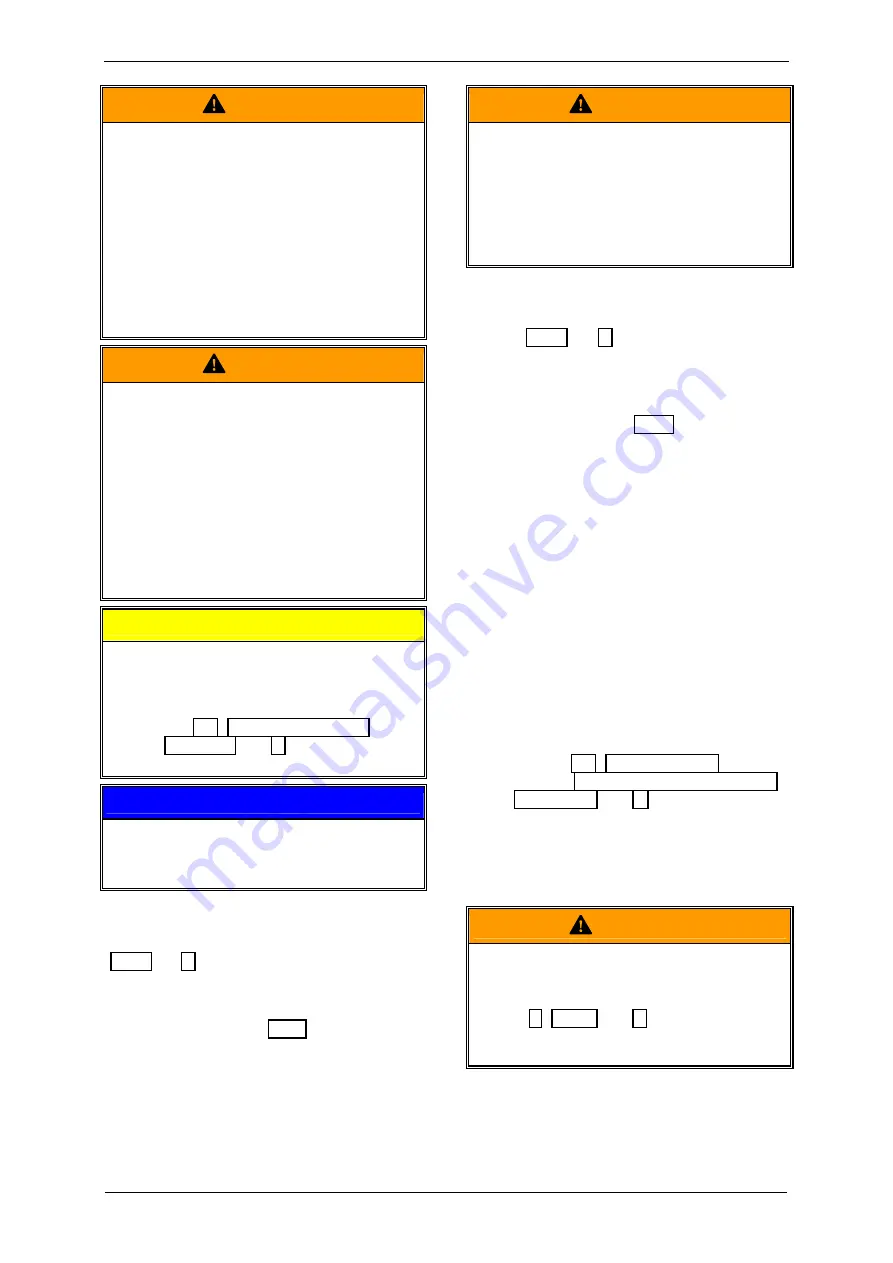
nash_elmo Industries GmbH
17 / 23
Order No.: 610.44436.40.000
Subject to change
Edition 09/2003
Commissioning
WARNING
Danger from interchanging inlet and
pressure line!
Interchanged inlet and pressure lines can lead
to damage to the pump-motor unit and the
system, and as a result of this to serious
injuries!
Make sure that the inlet and pressure line
cannot be confused when connecting.
Look for the clear marking with the flow
direction arrow on the inlet and discharge
connections.
WARNING
Danger due to vacuum and gauge pressure!
Danger due to escaping fluid!
During operation, connected pipes and vessels
are vacuumized or pressurized!
Use only mounting elements, connections,
lines, fittings and containers with sufficient
freedom from leaks and strength for the
pressures which occur.
Make sure that the mounting elements and
connections are mounted sufficiently firmly and
leak-free!
CAUTION
If the pumped gases are passed on on the
discharge side in a closed pipe system, then it
must be ensured that the pipe system is
adapted to the maximum discharge pressure.
See Chapter 3.3: "Operating conditions",
Section "Pressures", Pg. 9). Connect a
pressure relief valve upstream if necessary.
NOTICE
Attach pipes/hoses free of mechanical
tensions.
Support the weight of the pipes/hoses.
5.3.1 Inlet
connection
The inlet connection with the related muffler
(Fig. 1, Pg. 2, Item 3) is marked with an arrow
pointing into the vacuum pump/compressor.
Connect the inlet pipe here. The pumped
gases are sucked in via this.
Procedure: see Chapter 5.3.3.
WARNING
Danger from solid bodies and impurities in
the pump-motor unit!
If solid bodies penetrate into the pump-motor
unit, blades of the impellers can break and
broken pieces can be thrown out.
Install a filter in the inlet pipe.
Replace filter regularly!
5.3.2 Discharge
connection
The discharge connection with the related
muffler (Fig. 1, Pg. 2, Item 4) is marked with an
arrow pointing out of the vacuum
pump/compressor. Connect the discharge pipe
here. The pumped gases are discharged via
this.
Procedure: see Chapter 5.3.3.
5.3.3 Procedure
when
connecting
pipes/hoses
Attach the pipes/hoses to the unit as described
in the following.
The pipes/hoses are connected differently to
inlet and discharge connections depending on
the type of line (pipe or hose):
•
Muffler (with inside threads):
The pipe is screwed directly into the
muffler.
•
Hose connection:
–
Screw hose flange (available as an
accessory) onto the muffler.
–
Push the hose onto the hose flange and
secure it with a hose clamp. See
Chapter 3.1, "Mechanical data",
Section "Tightening torques for screw
connections", Pg. 8 for information on
this topic.
6 Commissioning
WARNING
Improper use of the unit can result in
serious or even fatal injuries!
Have you read the safety precautions in
Chapter 1, "Safety", Pg. 3 f.?
Otherwise you many not carry out any work
with or on the pump-motor unit!
















